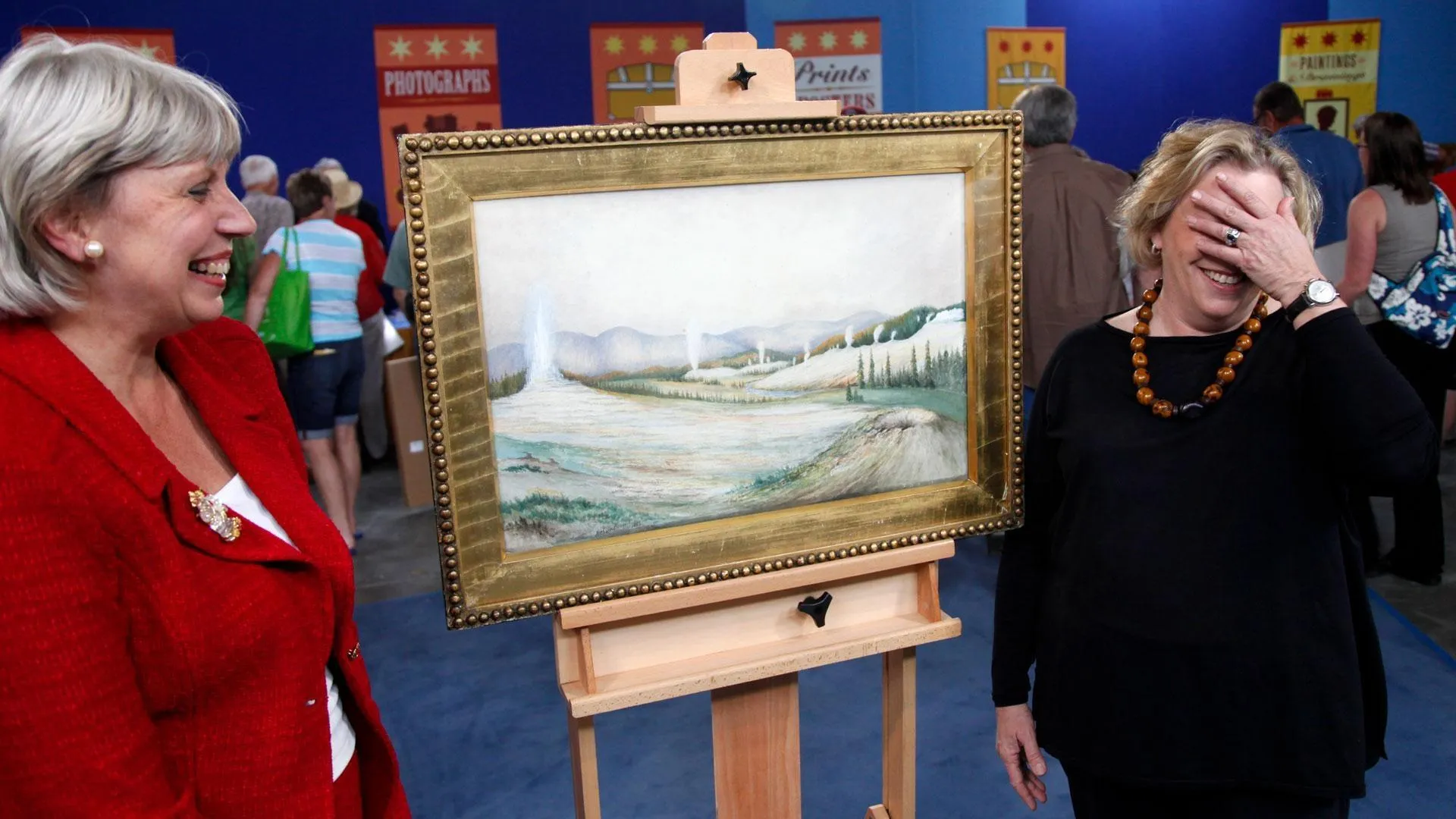GUEST: I'm a book collector. I look at books every day for the last 50 years. I think this is a book. And it came to me from a friend as a gift. It has prints in it, and I understand that they're Rowlandson prints or lithographs, but there's no identification in it as a book. And I've researched it and researched it and researched it. I can't figure out a thing about it.
APPRAISER: Okay, well, as you say, it contains prints by Rowlandson. And here's his name on the cover. The cover was added by a collector, okay? It's not something that was issued with the prints. And let's open up to just a nice example of a Rowlandson print. There are lots of prints in here. There are 56 prints in here, if I remember right. And here is a very nice example of Rowlandson print. Thomas Rowlandson was one of the most famous British caricaturists. He lived in the late 18th, early 19th century. He started as a young man as an artist doing portraits and things like that, and he inherited a pretty large sum from an aunt. When he did that he became a gambler, and he lost the entire fortune from his aunt. It was something like £7,000, which back then was a lot of money, and he kept gambling. I mean, he got hooked on it. And in order to pay off his debts, he discovered that if he made drawings he could give them to the people he owed money to, and he would get off the hook. Then he started selling them, and then people started liking his stuff, and he started making prints. So he became a print maker, and he did etchings. These are all etchings. He did them for a number of different publishers. He did prints for magazines, he did prints for books, but he also sold them as separate prints. Now, back then people actually had portfolios of them. The reason I pulled out this print is down here it says that there is a folio of caricatures that they would lend you for an evening. So you could go into a print seller and borrow the portfolio, take it home, show it to your friends. Maybe you'd like them and you'd want to own some of the prints themselves. So that's what people did. Collectors started collecting them and putting them into bindings like this. So what this is is it's not a book, it is a portfolio of prints by a collector. Rowlandson is very, very well known for different styles. This is a very good collection of early Rowlandsons. A lot of them are quite rare, and early states. And here is one of my favorites. This is showing a print sale. Of course, as a print seller, that's what I like. This is one of the most valuable ones in here, because it's a very scarce print. And you can see down here, the collector who had it actually wrote on it that it was scarce. These are put together in date order, and they are, I think, from 1786 to about 1816. But really what Rowlandson is best known for, I think, are his just gentle social satires. There are just some wonderful images in here. And here is one that is a great example of his social satire-- The Bassoon with the French Horn Accompaniment. And it's a couple lying in bed snoring away. It's wonderful. It shows all the elements of Rowlandson that made him popular. It shows a lot of the accoutrements of the day-- the candles, the plates, the gun. And this just wonderful humor to them that's soft but still making fun. These prints are quite rare. The ones that survive often come in a collection like this. That's what protected them, was the binding. Individually they have quite a good value. They range anywhere from maybe $400 for a small one to... something like this is probably around $2,000. The Print Sale is probably the most valuable in the group. That one sold for around $3,000 at auction a couple years ago. Now, there are 56 in here, so taking them individual prices, which is really where the value is, this portfolio is worth about $35,000.
GUEST: Pretty expensive. Thank you very much. That's very interesting.
APPRAISER: Absolutely.
GUEST: I learned a lot.



